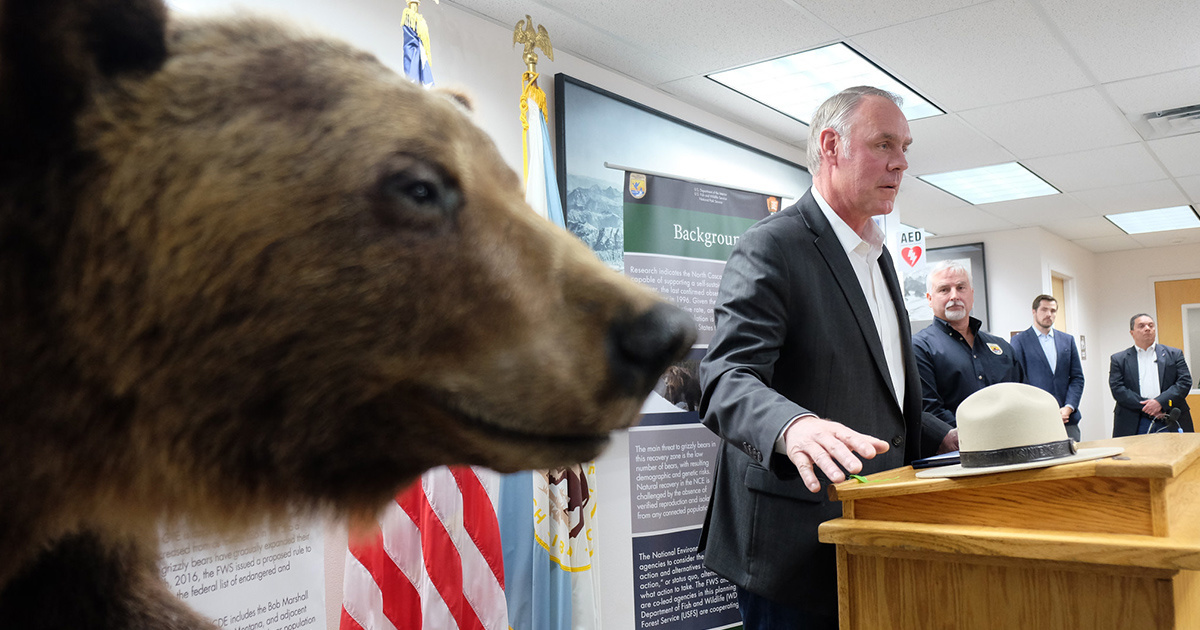

Interior Secretary Ryan Zinke has assembled a new outdoor recreation advisory panel dominated by top executives from the industry.
The 15-member “Made in America” Outdoor Recreation Advisory Committee will advise Sec. Zinke on issues surrounding public lands. They include officials that represent fishing, shooting sports, motorized vehicles and hospitality as well as national park concessionaires.
“The Made in America Outdoor Recreation Advisory Committee is made up of the private sector’s best and brightest to tackle some of our biggest public lands infrastructure and access challenges,” Zinke announced Monday.
“The committee’s collective experience as entrepreneurs and business leaders provide (sic) unique insight that is often lost in the federal government.”
The Washington Post reported that Zinke did not appoint committee nominees offered by the Outdoor Industry Association, which advocates for activities such as mountain climbing, hiking and kayaking. The association has criticized President Trump‘s decision last year to shrink the Bears Ears and Grand Staircase-Escalante national monuments in Utah.
The only member who does not come from the outdoor recreation industry is Linda Craighead, the assistant secretary of parks and tourism at the Kansas Department of Wildlife, Parks and Tourism. But as the Post observed, her LinkedIn profile indicates she is pro-business; in her current job she has “implemented key business strategies to transition the state park system from dependence on state funding to a self-sufficient business model while enhancing the natural, cultural, recreational and educational aspects of the parks.”
The panel includes three people whom department officials flagged as potentially having a conflict of interest on the matter, according to documents obtained by the Post.
The Post reported:
During the recent selection process for the Made in America panel, Interior staffers color-coded [Derrick Crandall, president of the American Recreation Coalition and counselor for the National Park Hospitality Association], along with those of Bruce Fears, president of Aramark Leisure, and Jeremy Jacobs Jr., co-chief executive of Delaware North, for having potential conflicts of interest. The document places Crandall in the category of “individuals who advocate for and represent the interests of NPS concessioners” and Fears and Jacobs as “current concessioners with the NPS.”
Both Aramark and Delaware North rank among the Park Service’s biggest concessionaires: Aramark has a $2 billion contract to operate concessions at Yosemite National Park, while Delaware North runs concessions at Shenandoah, Sequoia and Kings Canyon national parks.
This is not the first time Zinke has created an advisory panel filled with business representatives. Most members of the Royalty Policy Committee come from the oil, gas and mining industries. The new International Wildlife Conservation Council is mainly comprised of trophy hunters and individuals with ties to President Trump’s oldest son, who is an avid hunter.
Why Trump’s New Trophy Hunting Council Is a Disaster https://t.co/nea5KgbSaD @WWF @Defenders @MercyForAnimals
— EcoWatch (@EcoWatch) March 16, 2018

 233k
233k  41k
41k  Subscribe
Subscribe 